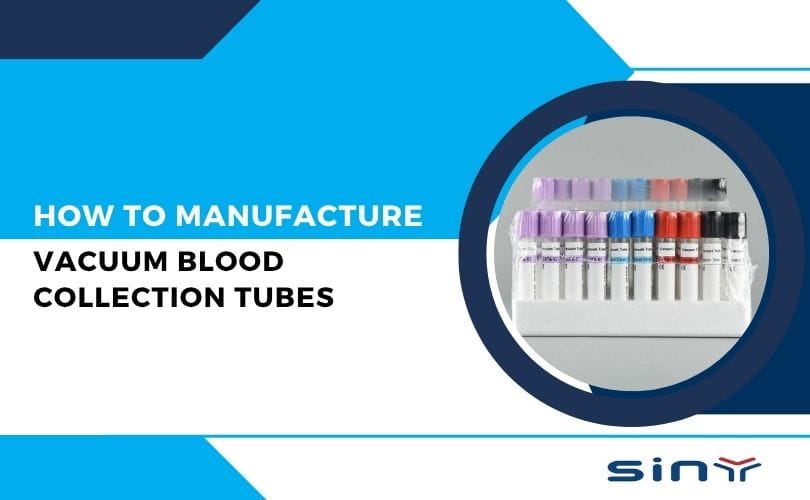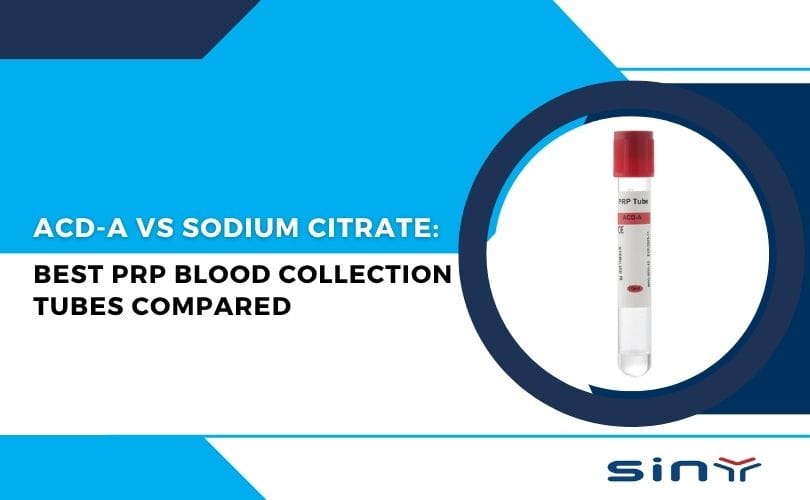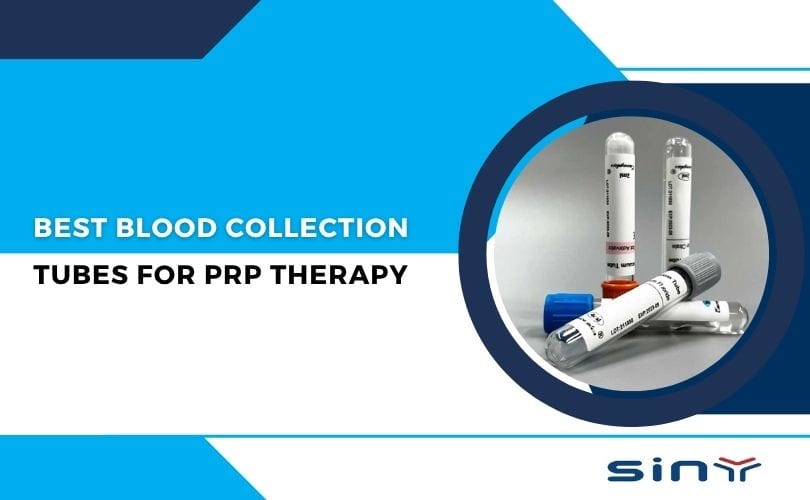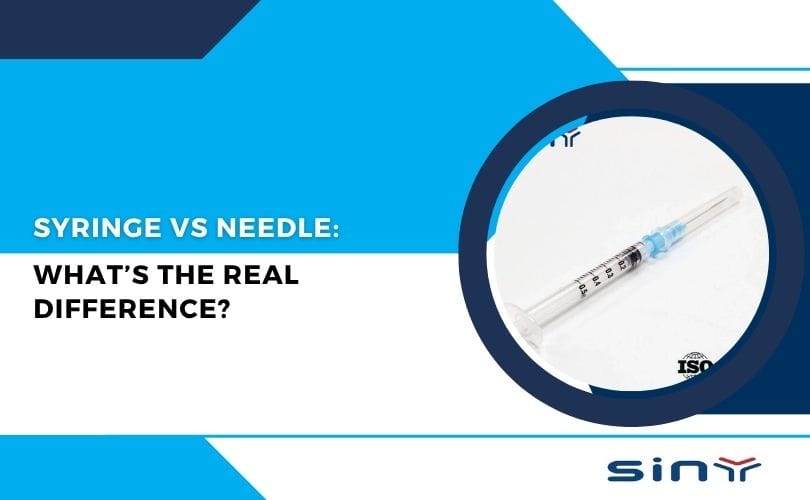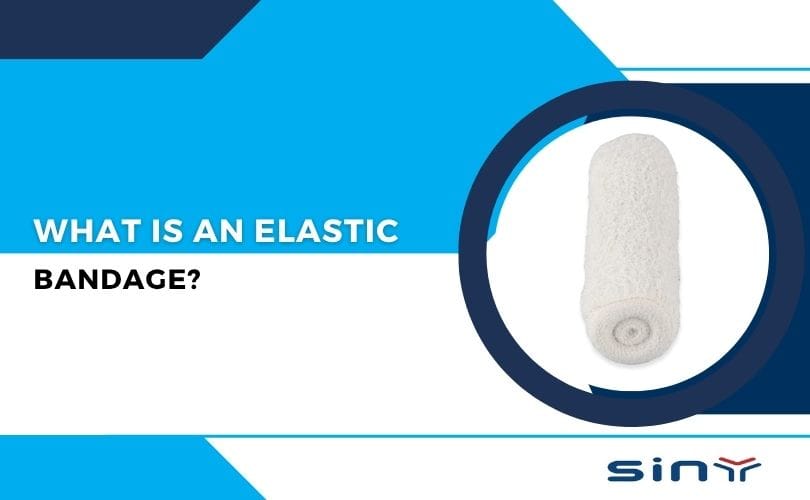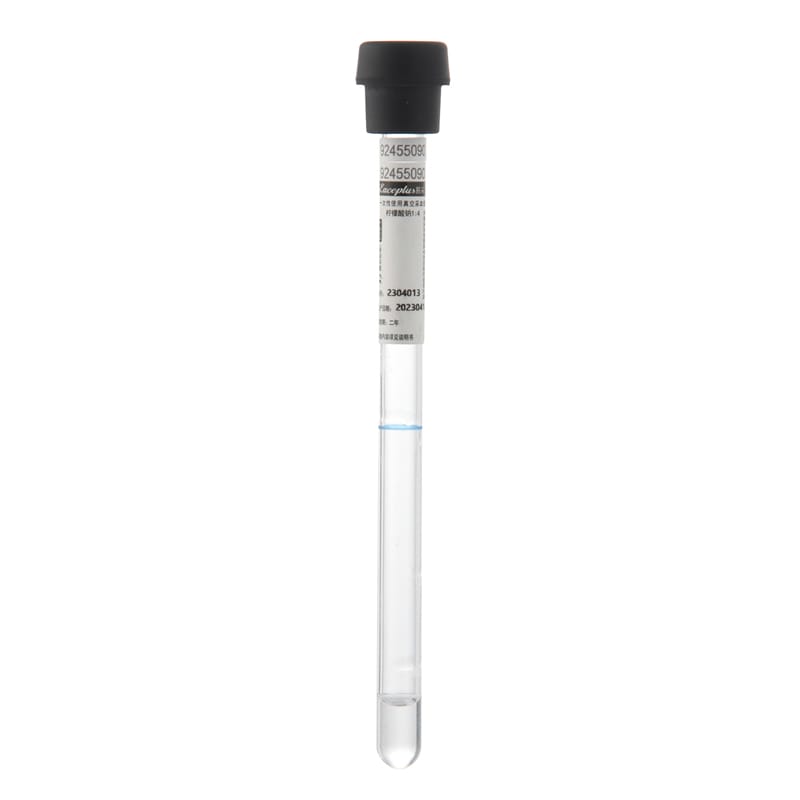Manufacturing vacuum blood collection tubes involves a precise and controlled process to ensure the quality and safety of these essential medical devices. These tubes play a critical role in modern healthcare, aiding in the accurate diagnosis and treatment of various medical conditions. Here’s an overview of the step-by-step process involved in siny manufacturing vacuum blood collection tubes:
Table of Contents
- 1 What are Vacuum Blood Collection Tubes?
- 2 Step-by-Step Guide to Manufacturing Vacuum Blood Collection Tubes
- 3 Material of vacuum blood collection tube
- 4 Benefits of Vacuum Blood Collection Tubes in Modern Healthcare
- 5 The Science Behind Vacuum Tubes
- 6 Importance in Blood Testing
- 7 The Advantages of Vacuum Blood Collection Tubes
- 8 Conclusion
- 9 FAQs
What are Vacuum Blood Collection Tubes?
Vacuum blood collection tubes are small, cylindrical containers of high-quality glass or plastic. They come with a colour-coded rubber stopper, indicating the type of additive or anticoagulant in the tube. The vacuum inside the tube allows for the automatic withdrawal of an appropriate blood volume when a healthcare professional punctures a patient’s vein.
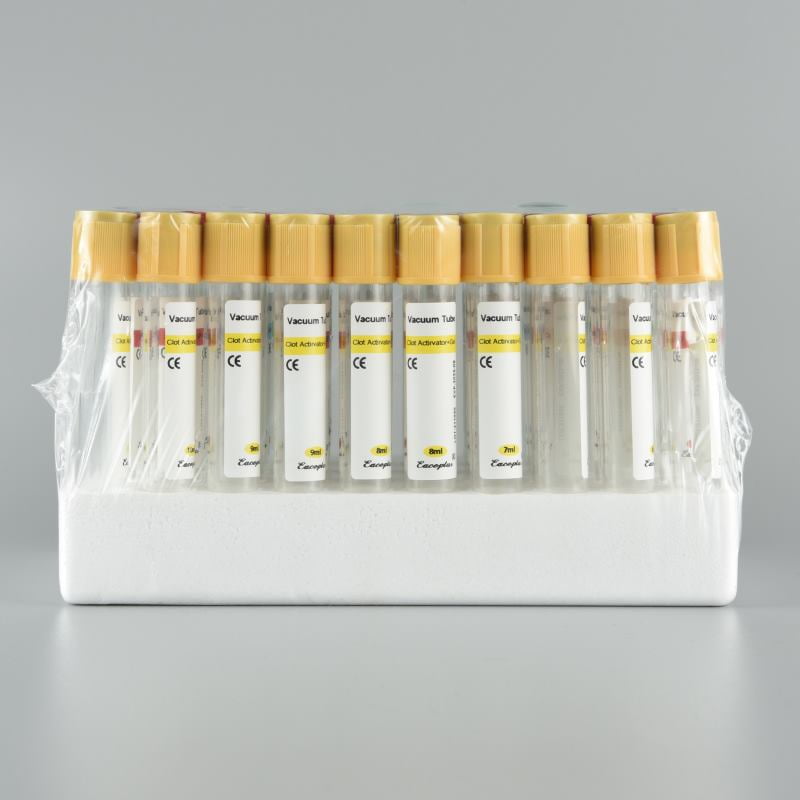
Step-by-Step Guide to Manufacturing Vacuum Blood Collection Tubes
1. Material Selection
The first step in manufacturing vacuum blood collection tubes is selecting the right materials. Most tubes are made from PET plastic or glass. PET is preferred for its durability, transparency, and resistance to breakage, while glass is used for specific applications due to its chemical inertness. The chosen material must meet strict medical standards to ensure safety and performance.
2. Tube Molding
The selected material is molded into the desired shape using advanced techniques like injection molding for plastic tubes or glass blowing for glass tubes. The molding process ensures that the tubes are uniform in size and shape, capable of withstanding vacuum pressure without deformation.
3. Additive Preparation
Different tubes contain specific additives to achieve their intended purpose. For example, heparin tubes are coated with an anticoagulant, while EDTA tubes contain ethylenediaminetetraacetic acid to prevent clotting. The additives are carefully measured and applied to the inner walls of the tubes to ensure consistent performance.
4. Vacuum Sealing
Once the additives are applied, the tubes are sealed under vacuum pressure. This step is crucial as it ensures that the tubes can draw the correct volume of blood when used. The vacuum level is precisely calibrated to meet medical standards, ensuring accurate sample collection.
5. Sterilization
Sterilization is a critical step to ensure the tubes are free from contaminants. The tubes are sterilized using methods like gamma irradiation or ethylene oxide gas. This process eliminates any microorganisms that could compromise the integrity of the blood sample or pose a risk to patients.
6. Quality Control and Packaging
After sterilization, the tubes undergo rigorous quality control tests to ensure they meet industry standards. These tests include checking for leaks, verifying vacuum levels, and ensuring the correct application of additives. This version uses active voice to clearly state who performs the actions, making the sentence more direct and dynamic. Proper packaging protects the tubes from damage and contamination during transit.
Material of vacuum blood collection tube
The micro-capillary tube is a marvel of modern engineering, designed to facilitate precise and delicate fluid transfer in various industries. Its slender, cylindrical structure with a minuscule internal diameter makes it an ideal tool for conducting experiments, medical procedures, and scientific research. Other benefits include incineration and destruction.
Blood Collection Tube
Most Blood Collection Tube Contain An Additive That Speeds Up Blood Clotting (Clot Activator) Or Prevents Blood Clotting (Anticoagulant). The Tube That Contains The Clot Activator Produces A Serum Sample When Centrifugation separates the Blood, And The Tube That Contains The Anticoagulant Produces A Plasma Sample After Centrifugation. Some Tests Require The Use Of Serum, Some Require Plasma, And Other Tests Require Anticoagulated Whole Blood.
Micro-capillary Tube
This Blood Collection microcapillary tube is ideal for use in various laboratory settings. The micro-capillary tube is a marvel of modern engineering, designed to facilitate precise and delicate fluid transfer in various industries. Its slender, cylindrical structure with a minuscule internal diameter makes it an ideal tool for conducting experiments, medical micro blood collections tube procedures, and scientific research.
EDTA Tube
An EDTA tube is a blood collection tube containing the anticoagulant ethylenediaminetetraacetic acid (EDTA) to prevent blood clotting.
Heparin Tube
The Heparin Tube is an ideal solution for medical and laboratory professionals who need to collect, store, and analyze blood samples. It is easy to use and provides accurate results, making it a reliable and practical choice for any laboratory.
No Additive Tube
The No Additive Tube represents a groundbreaking innovation in healthcare and consumer safety.
With the 10ml No Additive Tube, a new consumer trust and well-being era dawns. Unlike conventional products, which often contain harmful chemicals and additives, this revolutionary tube ensures that only pure and natural substances reach the end-users. Advanced filtration systems effectively eliminate toxic agents, offering a safer and healthier alternative.
Benefits of Vacuum Blood Collection Tubes in Modern Healthcare
Vacuum blood collection tubes, commonly known as vacutainer tubes, have revolutionized how blood tests are conducted in modern healthcare settings. These innovative tubes offer a range of benefits that contribute to more accurate, efficient, and safer blood collection and analysis. Let’s explore the significant advantages of using vacuum blood collection tubes.
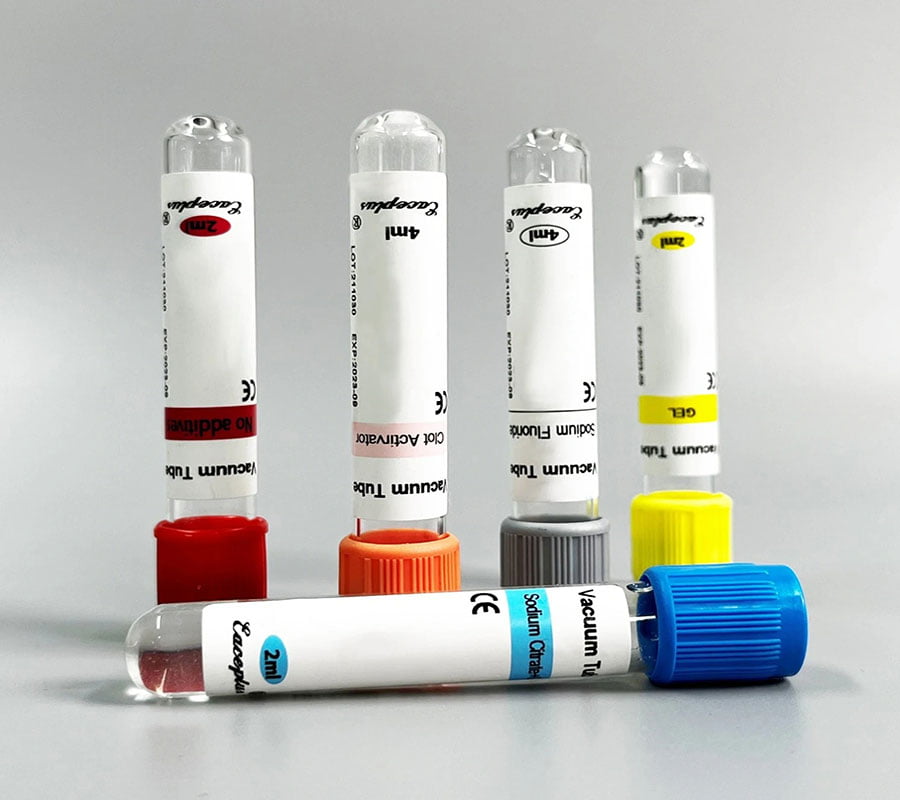
Accurate Blood Volume: One of the key advantages of vacuum blood collection tubes is their ability to precisely control the amount of blood collected. The vacuum within the tube automatically draws in the appropriate amount of blood needed for various tests. This accuracy helps ensure that laboratory results are reliable and consistent.
Minimized Patient Discomfort
Using vacuum tubes reduces the need for excessive needle insertions, making blood collection less painful and uncomfortable for patients. The controlled vacuum flow allows for a smoother and quicker blood draw, enhancing patient comfort during the procedure.
Safety for Healthcare Professionals
Vacutainer tubes enhance the safety of sinymedical healthcare professionals by minimizing the risk of accidental needle sticks and exposure to bloodborne pathogens. The one-time-use design reduces the chances of cross-contamination between patients, contributing to a safer working environment for medical staff.
Optimized Workflow
The vacuum-based system streamlines the blood collection process, enabling healthcare providers to collect blood samples from multiple patients efficiently. This optimization reduces patient waiting times and enhances the overall workflow in hospitals, clinics, and laboratories.
Variety of Additives
Vacuum blood collection tubes are available with various additives and anticoagulants and Clot Actirvator Coagulant Tube, each catering to specific types of tests. These additives prevent blood from clotting, preserving the integrity of different blood components for accurate analysis. This diversity makes the tubes suitable for a wide range of diagnostic tests.
Accurate Test Results
Using vacuum blood collection tubes significantly reduces the risk of sample contamination and hemolysis (destruction of red blood cells). This preservation of sample integrity leads to more accurate test results, enabling healthcare professionals to make well-informed decisions regarding patient care.
Reduced Sample Rejections
The standardized design of vacutainer tubes and their controlled vacuum ensure precise blood collection volumes for each test. This reduces the likelihood of insufficient or excessive blood samples, minimizing the need for sample retesting and 3.2% Sodium Citrate Tube associated inconveniences.
Improved Blood Sample Preservation
The additives in vacuum tubes prevent blood from clotting and preserve the stability of different blood components, such as cells and plasma. This preservation is crucial for maintaining the accuracy of test results, especially for tests that require analysis after a certain period.
Enhanced Laboratory Efficiency
The consistent and accurate blood volume collected through vacuum tubes leads to more efficient laboratory processes. Technicians spend less time handling and processing samples, allowing them to focus on conducting tests and delivering results promptly.
Advanced Medical Diagnostics
Vacuum blood collection esr tubes have played a pivotal role in advancing medical diagnostics. The reliability and accuracy of the blood samples collected contribute to improved disease detection, monitoring, and treatment management.
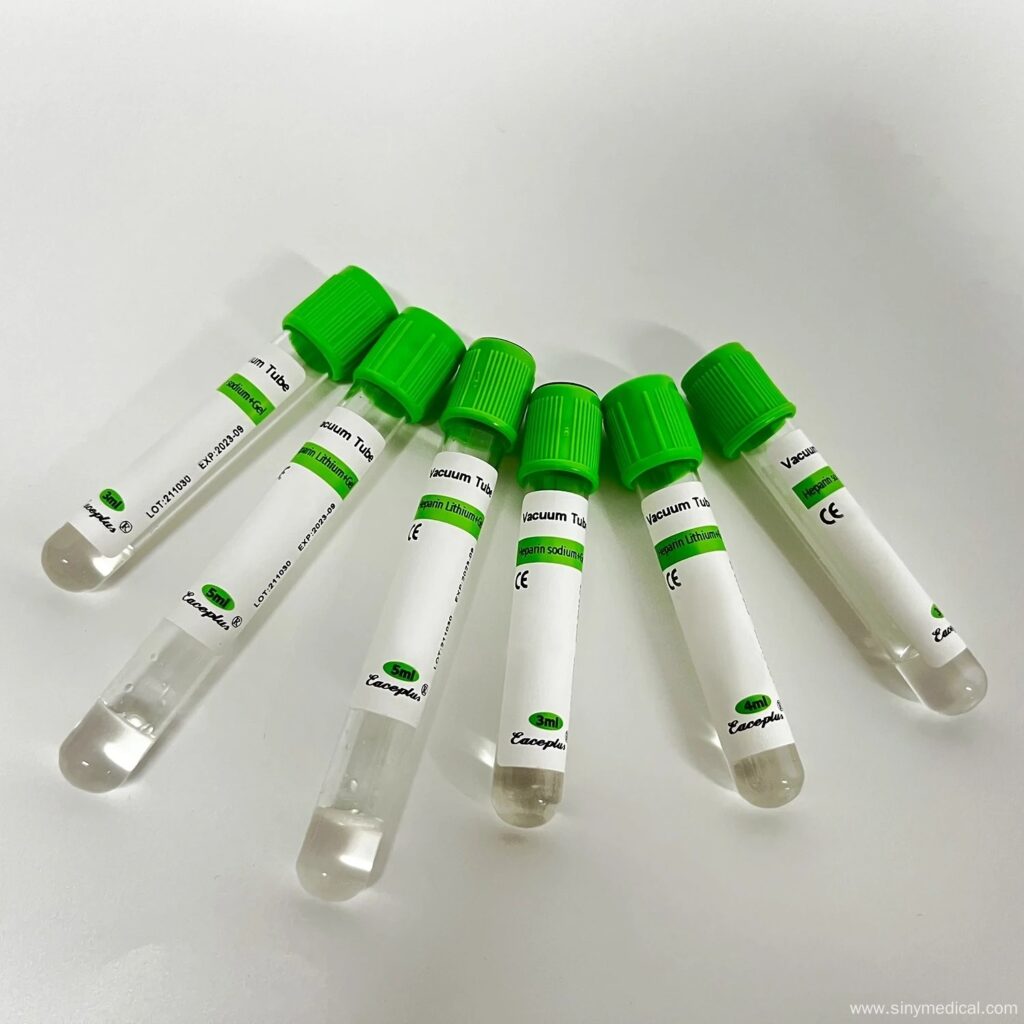
The Science Behind Vacuum Tubes
The concept of vacuum EDTA Tubes For Blood Collection relies on negative pressure. When the phlebotomist inserts a needle into a patient’s vein and connects it to the vacuum tube, the air pressure is lower than the pressure inside the vein. As a result, blood flows effortlessly from the patient’s vein into the tube without requiring additional suction or manual effort.
Importance in Blood Testing
Vacuum blood collection tubes play a crucial role in ensuring the accuracy and reliability of blood test results. They come with different additives, such as EDTA, sodium citrate, heparin, or clot activators, which prevent blood from clotting and preserve the integrity of other blood components. These additives ensure the blood sample remains stable and suitable for various laboratory analyses.
The Advantages of Vacuum Blood Collection Tubes
The use of vacuum blood collection tubes offers several advantages over traditional methods of blood collection, such as:
- Improved Safety
Vacutainer tubes reduce the risk of accidental needle sticks and exposure to bloodborne pathogens for healthcare professionals. The one-time-use design minimizes the chances of cross-contamination between patients.
- Convenience and Efficiency
The vacuum-based system allows for faster and more efficient blood collection. It enables healthcare providers to draw blood from multiple patients quickly, reducing waiting times and optimizing workflow in healthcare settings.
- Accurate Blood Volume
The standardized size of vacuum blood collection tubes guarantees that healthcare professionals draw the appropriate amount of blood for each test. This accuracy is essential for obtaining reliable test results and reducing the need for sample retesting.
- Wide Range of Applications
Vacutainer tubes cater to various medical tests, including complete blood counts (CBC), blood glucose levels, cholesterol levels, blood clotting factors, and more. The availability of different additives accommodates the requirements of various tests.
Conclusion
The manufacture of vacuum blood collection tubes is a complex and precise process that ensures their safety, reliability, and effectiveness in medical applications. From material selection to quality control, each step is crucial to producing high-quality tubes that meet industry standards. These tubes play a vital role in diagnostics, research, and treatments like PRP therapy, making their manufacturing process essential for modern healthcare.
For high-quality vacuum blood collection tubes, visit Siny Medical and explore our extensive product range. Don’t forget to check out our YouTube channel for more insights and updates.
FAQs
1. What materials are used in manufacturing vacuum blood collection tubes?
Tubes are made from PET or borosilicate glass, with butyl rubber or silicone stoppers and plastic caps. Additives like EDTA, heparin, or clot activators are included based on the tube’s purpose.
2. Why is vacuum precision important in blood collection tubes?
Precise vacuum levels ensure the correct blood volume is drawn, preventing dilution errors and ensuring accurate test results. Siny Medical uses advanced vacuum technology for reliability.
3. How are vacuum blood collection tubes sterilized?
Tubes undergo sterilization through gamma radiation, ethylene oxide, or steam, adhering to ISO 11137 standards to guarantee sterility.
4. What standards regulate the manufacturing of vacuum blood collection tubes?
Key standards include ISO 13485, ISO 6710, FDA 21 CFR Part 820, and EU MDR. Siny Medical adheres to these regulations.
5. Where can I purchase high-quality vacuum blood collection tubes?
Siny Medical offers a wide range of tubes, including Micro Capillary Tubes and Serum Tubes. Contact us for more information.


